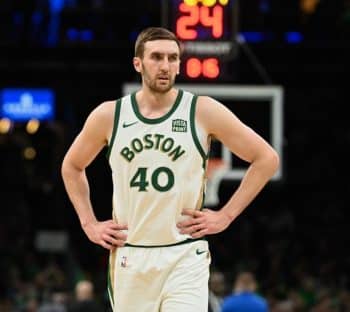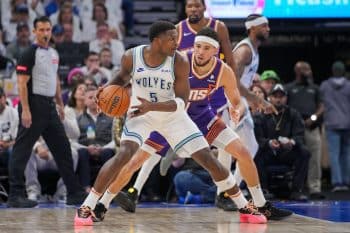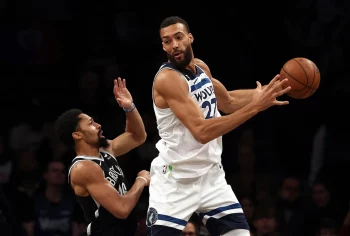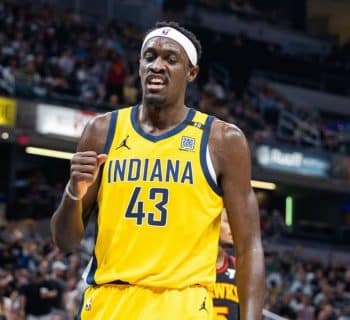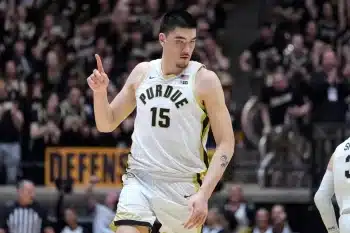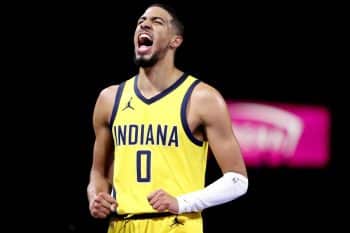NBA
NBA AM: D-League Not So Minor Anymore
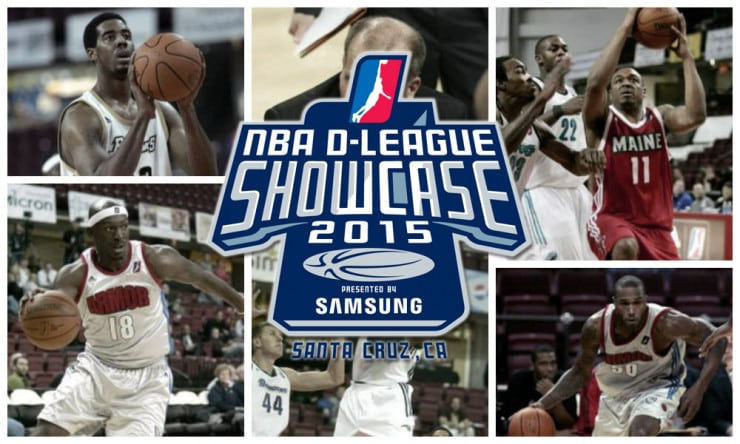
Not So Minor Any More: The D-League, the NBA’s developmental league is becoming a bigger part of the basketball discussion, especially for some of the fringe guys in NBA training camps this season.
For the first time in its 14-season history the D-League will feature 17 single-affiliation partnerships. Eight of those teams are owned and operated by their parent NBA club, while nine teams operate under what’s called a “hybrid” affiliation where the parent NBA team runs the basketball operations side, while an independent owner runs the business and sales side.
A quick run of the math: There are currently 18 D-League teams featuring 17 D-league single affiliation teams versus 30 NBA teams, meaning there is a lone “independent team” that the remaining 13 NBA teams will be affiliated with and that is the Fort Wayne Mad Ants.
NBA teams are permitted to “assign” up to four players to their D-League affiliate at any one time, but no more than two players at any one position.
The Mad Ants will have a slightly different set of rules this year because of their 13 affiliated NBA teams. To accommodate assignments to Fort Wayne, a flexible assignment system will be utilized this season. If an independent NBA team assigns a player to the Mad Ants and they already have either the maximum of four NBA players on assignment or have two players assigned at the position of the NBA player who is being assigned, that player will either be allocated to one of the direct affiliated teams, with mutual consent, or that player will be assigned to one of the non NBA-owned single affiliate teams using a lottery-type system.
For the first three years of a NBA player’s career he can be sent to the D-League an unlimited number of times, however, players with more than three years of experience can only be sent to the D-League with their and the Player’s Associations’ consent.
The NBA and the Player’s Association have been more flexible about the D-League over the years, allowing teams to freely move players in and out. This has become extremely helpful for franchises like the Oklahoma City Thunder, who use their D-League team to get valuable playing experience for their younger guys.
As more teams take control of their minor league teams, additional focus is being put into the daily operation of those teams. The Thunder and the Spurs run virtually the same offensive and defensive systems in the D-League as the parent club, going as far to install the same processes and terminology to better acclimate the switch from one team to the other.
The proximity of the owned D-League teams is playing a bigger factor in how often and in-depth NBA teams use their affiliate. Most teams that are owned by a NBA team are less than 90 minutes from their parent team, making it logistically easier for the front offices to meaningfully participate in the D-League process. It also makes it more reasonable for players to be sent down to the D-League team for playing time and then immediately brought back to the parent team.
The NBA also adjusted the assignment rules for the D-League this season, which is playing out in training camps this year. Players that are in a team’s camp now can have their D-League rights retained after they are waived by the NBA club and clear the waiver process.
The meaningful exception is those players who played in the D-League last season.
While all D-League contracts are one-year deals, if a player played for a team last season, that team has that player’s rights for the upcoming season if that player chooses to play in the D-League this year. The exception there is a drafted player. Thanasis Antetokounmpo played in the D-League last season for Delaware, but was drafted by the Knicks. His D-League rights remain with the Knicks by virtue of the draft.
However, Orlando Magic camp invite Seth Curry played in the D-League last season with Santa Cruz, so they would retain his D-League rights despite being brought into camp by the Magic with eye on him playing for their D-League team. What’s likely going to occur there is some type of trade between Santa Cruz and the Erie Bayhawks if Curry opts to play in the D-League and does not make the roster in Orlando.
A number of teams are also figuring out ways to navigate the D-League’s extremely low salary system.
The NBA and its teams don’t talk about the D-League salary system, but it’s been reported numerous times that the D-League employs a salary cap system where each team is capped at roughly $173,000 per team, and employs slotted salary tiers for player contracts. Top level players earn roughly $25,000 per season, while second tier players earn$19,000 per season with lesser named guys earning $13,000 per season.
The work around some teams have found is to offer guaranteed money in their initial NBA contract offers, knowing that those players would be cut after camp and sent to the D-League. Some teams have gone as far as using their 15th roster spot and the NBA wage associated with it as a means to work around the limited salary available in the D-League, simply signing the player and assigning him to the D-League for the bulk of the season. The third mechanism is the 10-day contract option teams have available starting in January.
Last season current Pacers’ camp invite Adonis Thomas signed with the Atlanta Hawks, who guaranteed him $50,000 to come to camp. He was released and landed in the D-League for 34 games before getting a series of 10-day contracts from the Philadelphia 76ers and the Orlando Magic. All told, Thomas earned roughly $150,000 last season despite playing most of it in the D-League.
Changes to the D-League’s economic structure are coming. With more teams owning their own teams, and the eventuality that there will be one D-League team per NBA team in the not so distant future, increasing the funding and salaries in the D-League is on the horizon. The NBA has been pushing to increase the age limit to enter the NBA and increased D-League funding could be part of an age limit increase compromise between the NBA and its players.
NBA teams are charged an affiliation fee if they do not own a team. That fee is said to be north of $250,000 per team. The teams that own and operate their own team are spending anywhere from $1.5 million to $2 million a season to fully run a team. When you factor in that the NBA’s salary cap could reach $70-$80 million inside the next two seasons, the D-League is going to play a bigger role going forward. With 17 teams now in control of their D-league teams, you can expect a lot more movement between leagues as well.
The D-League opens regular season play the second week of November and plays a 50-game schedule, with the D-League showcase set for January 15-19 in Santa Cruz. This year the Showcase will feature a tournament style format called the Showcase Cup, featuring the top eight teams in the D-League.
Short Term Deals?: The biggest fear among NBA teams competing for something is that the players they sign to big contracts fade out before their contracts are finished. The worst years of a player’s contract are usually those last years. When guys like Atlanta’s Paul Millsap and Charlotte’s Al Jefferson signed with their respective teams, their age played a factor.
As each enters their second season with their respective teams, the deals they signed last season are starting to become problematic for their home teams.
Jefferson had questions marks. Most around the league liked Jefferson, but was he a guy you invested a ton of money into? The Hornets thought so, inking him to a three-year, $40.5 million deal. The problem for Charlotte is that the third year was a player option and Jefferson has arguably out-played his $13.5 million salary, or at least played himself into a few more guaranteed years.
This puts the Hornets in a tough spot. Jefferson can and likely will opt-out of his deal in July if only to sign a new deal. There is also the possibility of another team poaching Big Al away.
The Hornets and Jefferson are saying all the right things, that they both want to continue the relationship beyond the current season, but the Hornets will have little control over the process, by virtue of the shorter term deal. So instead of entering season two with Big Al as the cornerstone, there will be questions and inevitably rumors, especially with as many at 15 NBA teams having ample cap space next July.
The Hawks find themselves in the same place with Millsap. He agreed to a two-year, $19 million deal last summer. Millsap earned an All-Star berth last season and led the Hawks to the postseason, clearly outplaying his $9.5 million salary this season.
Millsap will be an unrestricted free agent and while the Hawks can do a new deal, Millsap will be free to explore his options.
Hawks’ head coach Mike Budenholzer, who is also handling the personnel moves on an interim basis, has said his team and Millsap have been talking and while an extension of the existing contract is not an option, both parties would like to continue the relationship.
Like Jefferson, he too could stay, but with Millsap being unrestricted, he too is going to face constant questions from the media and ultimately rumors, especially if the Hawks struggle to compete.
Sometimes the short-term deals make sense. Sometimes players who don’t get the larger payday the first time want the chance to hit free agency again, so some of this is simply the byproduct of shorter term or lower dollar deals. But for both the Hornets and the Hawks, those shorter term deals will create storylines neither team really wants to deal with. While it’s likely both guys ink new deals right where they are, their potential for unrestricted free agency is going to keep their names in the news.
The K.J. McDaniels Contract: So 76ers second round draft pick KJ McDaniels opted to sign a one-year, fully non-guaranteed tender contract instead of the four-year deal the 76ers put on the table.
While some may point to that decision as risky, it’s actually really smart, especially for a player that could see significant playing time.
The 76ers offer was a four year deal, which featured some guaranteed money in year one, a little bit of guaranteed money in year two and no guaranteed money in years three and four. It in essence fully protected the 76ers, locked in McDaniels’ rights and insured his cost was low.
That would have been a great deal for the 76ers; it’s a terrible deal for the player.
Agents with second-round picks are being asked to agree to these massively one-sided deals. For players that may not play or are bubble guys, a four-year deal sounds great, until you outplay your deal.
In McDaniels’ case, he was a borderline first-rounder. If he plays well this year it’s likely as a restricted free agent in July a team offers him a three or four year deal worth $4 or $5 million. That’s not the home run payday of a marquee free agent, but it’s almost twice what the Sixers were offering and it’s likely to be fully guaranteed.
The smart money says if McDaniels plays well he’s back with the 76ers on a better deal next season. If he plays really well, he could see a market for his services in free agency. If he doesn’t play well the 76ers release him and he can pick his next team based on fit. To retain his rights the Sixers would have to issue a qualifying offer, the value of that offer is likely better than what was in the four year deal, so there are lots of options for McDaniels.
There is risk of injury, but it’s likely that his agent has secured an insurance policy to protect against that.
While most teams do find middle ground with their second-round picks and get them signed, what’s playing out with McDaniels and the Sixers isn’t new. A number of agents have presented this option to their clients who usually buckle to the allure of a multi-year deal. If McDaniels gets a hefty payday next summer you can expect more second rounders to use this tactic, especially if their teams won’t guarantee the dollars.
More Twitter: Make sure you are following all of our guys on Twitter to ensure you are getting the very latest from our team: @stevekylerNBA, @AlexKennedyNBA, @LangGreene, @EricPincus, @joelbrigham, @SusanBible @TommyBeer, @JabariDavisNBA , @NateDuncanNBA , @MokeHamilton , @JCameratoNBA and @YannisNBA.
